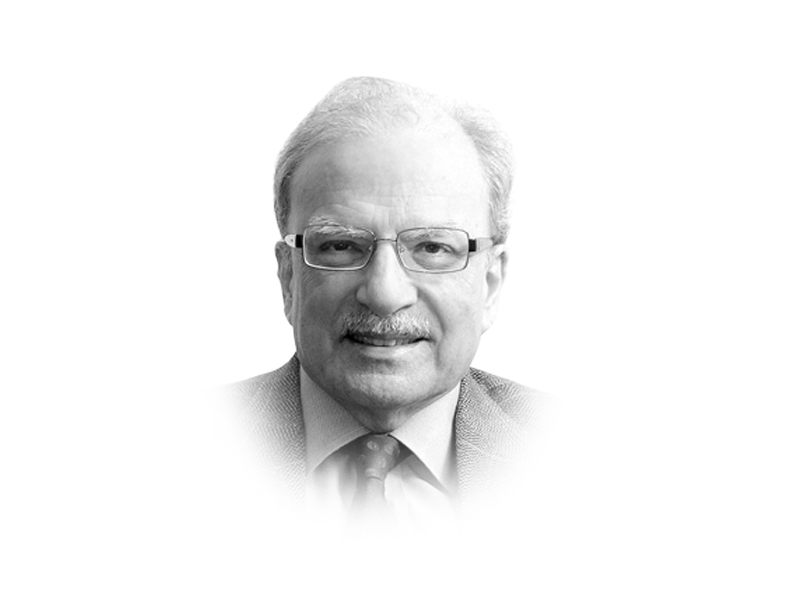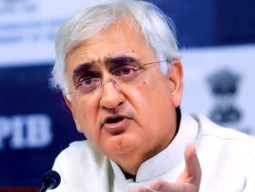
The one at present is a composite crisis, a number of events coming together, each piling on top of another to produce a perfect storm. That said, the history of crisis in Pakistan does have lessons to teach. They should be looked at not only to devise a strategy to steer the country out of the present situation but history can also help break the cycle of crises whose constant recurrence has already done so much damage to the country’s political and economic system.
Looking at the causes of the crises in the past, we can see some that stayed in place and, under the surface, waited to re-emerge whenever the time was right. About a quarter of the crises resulted from poor relations with India, Pakistan’s sister state. It took time for India to accept the idea of Pakistan: the notion that one part of the subcontinent can break away from what most of the established leadership regarded as a single political, social and economic identity. This happened because two competing ideas came to be advanced and sold to the populace at the same time and with an equal amount of vigour and acumen. The ‘idea of India’ was put forward to suggest that political, social and economic orders could be manufactured that would satisfy the aspirations of the diverse people that inhabited the vast expanse of the land called ‘India’. The ‘idea of Pakistan’ went in exactly the opposite direction. Mohammad Ali Jinnah’s ‘two nation’ theory advocated a separate homeland for Indian Muslims. Jinnah was able to persuade British India and ultimately, the Congress Party that for peace to prevail in the subcontinent, two independent states had to be created. Looking back at the two ideas, the one about India worked better than the one about Pakistan. East Pakistan’s separation and emergence of the independent state of Bangladesh was ample proof that religion alone could not be a unifying force for the creation of a state. At times ethnicity and language can prove to be more powerful forces for building a nation.
Given this history, it is important for Pakistan and India to make a serious effort to prepare for creating harmony in the South Asian region. Judging by the recent pronouncements of the two countries it appears that Pakistan is prepared to walk more than half the way towards India to create a framework within which the two countries can work. Manmohan Singh’s sharp response, in the New York meeting with his Pakistani counterpart is evidence of this. Singh’s tone came as a complete surprise especially to those who know him well. That posture may be a part of the electoral politics in the country as the Indian nation prepared for another general election in the spring of 2014. The surge in the popularity of the communal-minded Narendra Modi, Gujarat’s chief minister, who is the candidate of the nationalist Bharatiya Janata Party for the job of prime minster may have motivated Prime Minister Manmohan Singh.
Afghanistan is the source of at least three of the dozen crises. Here, again, the India factor weighs heavily but the unresolved issue of the role of Islam has also played a role. Pakistan and India should develop common ground, developing a regional approach towards taking Afghanistan towards peace. Both New Delhi and India should ensure that Afghanistan will not become a geographic area over which the two countries will duel. Afghanistan must not become another Kashmir. They should work together to find a regional solution involving the countries of the areas that have a deep interest in Afghanistan’s future.
The remaining crises resulted from the underdeveloped natures of the political and economic systems. On the political front, Pakistan has struggled with the problem of bringing in the military as a player but not as the dominant force. From the very beginning of the country the more literate and urban classes wanted a representative form of government. They were, however, not able to work out the shape the system should take. The political space that this unending debate created was occupied by the military. The military’s domination was not the result of a conspiracy between it and the mullah as Hussein Haqqani has suggested in an earlier book. The military’s long presence on the political stage, however, retarded political progress and prevented the country from developing a political order that would serve the most economic segments of society.
In this broad overview, I have not talked about the crises of governance and economic sustainability. These are in my list of the dozen crises through which the country has passed at various times but their resolution will result from movements in the three areas I have identified as being the main causes of repeated upheavals in the country.
Published in The Express Tribune, November 4th, 2013.
Like Opinion & Editorial on Facebook, follow @ETOpEd on Twitter to receive all updates on all our daily pieces.
COMMENTS (22)
Comments are moderated and generally will be posted if they are on-topic and not abusive.
For more information, please see our Comments FAQ














































"Pakistan and India should develop common ground, developing a regional approach towards taking Afghanistan towards peace. " Afghanistan is not a goat you have been accustomed to take to a slaughter house. What right do India and/or Pakistan have, to do what you advise them to do, except with the explicit concurrence by Afghanistan? That means Afghanistan will decide, not you or India. Can you even comprehend how Afghans must feel towards Pakistan after reading this inanity. India cooperates with Afghanistan for its development. You provide safe haven to their tormentors. Now, why would Afghans even countenance your presence at the table? Why would India consent to be associated with such a tormentor? "Karo dosto pehle aap apni izzat" You have got a long way to go to reach that goal.
@ Wonderer
I wish more Pakistani analysts and people in general tried calling a spade a spade like you did, and not engage in verbal gymnastics.
Oh, not even you Mr. Burki? You could have avoided ruining an excellent piece of thought-provoking write-up by your awkward attempt to tender unnecessary advice to India, as is a practice with most Pakistani writers. It would have been much better if you had instead concentrated on advising Pakistan to suitably change itself. No amount of advising or equating Pakistan with India will ever change anything. India is like an elephant moving resolutely towards its goals, completely unconcerned, but only worried, about our existential problems. We must learn to find our own way out of the self-inflicted mess we are in, without looking to India for any help or accommodation.
I shall list below the steps, including the difficult ones, which will surely work for us, even if some will need time.
Detoxify our masses by telling them the truth about our past actions. Stop army interference in our foreign policy, especially towards India and Afghanistan. Get rid of all types of Non-state Actors, which is only a weapon of our monopoly. Discard Jihad, because it is a seventh century weapon, now obsolete and useless. Try becoming a responsible and respected member of the comity of nations by separating religion from our politics, and sticking to truth. Get serious about education and health of our people. Stop believing in all kinds of 'conspiracy theories'. Keep our Ghairat under check.If we can do all this, and implement the other suggestions of Mr. Burki with the necessary determination, I am sure we will not only survive as a nation but also prosper. Insha Allah!
@Dan Andre:
Are you sure? Couldn't your "Javaid Burki" be some other person with same name, and not this writer?
If you are not mixing names by mistake, can you please provide some verifiable evidence?
Looking back at the two ideas, the one about India worked better than the one about Pakistan. East Pakistan’s separation and emergence of the independent state of Bangladesh was ample proof that religion alone could not be a unifying force for the creation of a state. At times ethnicity and language can prove to be more powerful forces for building a nation.strong text
How true, and coming from a patriotic Punjabi! Had I said it I would have been dubbed anti state!
@author: " ... Given this history, it is important for Pakistan and India to make a serious effort to prepare for creating harmony in the South Asian region .. "
There is disharmony in Pakistan ONLY. Except for high onion prices, we in India are doing quite fine.
How the historical context can be discussed without Zia? He is crisis in himself, and everything that is happening today is invented by him. It is just that without him it becomes that much easier for the writers to discuss the issue and make India responsible for Pakistan's current crisis.
This Javaid Burki is a fraud and defaulter in two places: In Los Angels court by cheating and stealing Chinese governments funds and using his wife's name to borrow money with a Pakistani bank and defaulting the loan of $50 Million Dollars.
Why a criminal like this is allowed to write article son this prestigious paper?
The Pakistani military has its own agenda of sending the terrorists across the LOC and you are talking about your country coming half way to meet India for peace! You have forgotten the fact that, as in his previous tenure, Mr Shariff is well aware that he is not in control of the army. Having split from India to form a separate country, you have no right to talk about a member of the majority community of a secular nation being communal. You don't know that people in India are more concerned about governance and not religion; they are fed up with 'secular' congress party's corruption which is the worst in history. Indian people know, and have the right to decide, who they should be governed by.
Judging by the recent pronouncements of the two countries it appears that Pakistan is prepared to walk more than half the way towards India to create a framework within which the two countries can work
Pakistan does the talking and expects India to do the walking. By the way where is the MFN status that Pakistan promised India in exchange for India to drop its objections to the EU deal
Pakistan's words are worth as much as the newspapers they are printed in.
The single factor that has caused cleavage is the action of the State is thrusting religion down the throats of its citizens using every tool available to the State. The use and abuse of religion had unintended consequences as it radicalized the population and made extremists and fundamentalists, out of ordinary citizens. The Afghan misadventure also extracted a heavy cost by destroying internal cohesion and created mercenaries whose services were available for hire.
If one has to learn how to pass-the-buck, not take responsibility of ones actions and avoid accountability of ones decisions, one can read the history of Pakistan, whatever little it does have.
There seems to be prevalent in Pakistan the entirely misplaced notion that spouting sweet sounding words is enough to negate past and continuing actions of promoting terrorism targeting India not to mention other hostile Pakistani behaviour such as attacking and beheading Indian soldiers. Pakistan must be very clear that the tree of harmony on the Indian Sub-Continent will need to be necessarily watered with the blood of Pakistani based terrorists who have targeted India.
The roots of the crisis lies in the misreading, misinterpretation, and misunderstanding of history littered throughout the this article. Pakistan is not India's "sister state" but an offspring. It was not achieved through "persuasion" but by blackmail of violence (Direct Action Day) which would be called terrorism in today's world. There are other misrepresentations in this piece which Pakistanis have been brainwashed into believing. All this does not mean Indians have not accepted Pakistan. A better thing could not have happened to India. It would have been unmanageable otherwise and would have been internally unstable and externally at loggerheads with China. Everyday of Pakistan's existence, despite the 1000 cuts, is a reminder of how much better off India is.
Since Kargil few Indians trust Pakistan. Most indians seem to implicitly believe that Pakistan holds violent hatred towards india. All overtures by Pakistan about dialogue are almost always considered to be a move to wrestle Kashmir. Perhaps it will take another hundred years to have a real dialogue. In the meantime, no more Mumbai attacks please.
Both New Delhi and India should ensure that Afghanistan will not become a geographic area over which the two countries will duel.
'Both New Delhi and India'??????
Are you sure New Delhi and India are in an adversarial role, just as Rawalpindi and Islamabad? Or is it just an inadvertent slip?
Now, coming to Afghanistan, India would not like a repeat of IC 814. What are Pakistan's expectations? And has anyone asked the Afghans as to what are their expectations?
Looking at Afghanistan from another angle, one can see India has invested close to USD 2 Billion in Roads, Hospitals, Power Projects, Schools and training of the Afghan National Army. If Pakistan too wants to do more of the same, the Afghans would certainly welcome it.
The manufacture of crises in Pakistan had religion and Kashmir as the only raw material. You have the jihadis as the fruits of your labour. Enjoy them. Let us not discuss anything unless and until you discard them both in public sphere. I am sure ET mods will not post this as a majority of my comments have not hit the screen at all in the past few weeks.
Do not agree!
You first and foremost need to remove religion from politics completely - everything else will fall in place!!
Did Modi ever say "I am not prepared to discuss ethics. We have the pistol and are in a position to use it".
What followed was an unimaginable massacre of people belonging to one religion. Six thousand killed, twenty thousand raped and maimed in Calcutta alone.
Guess who said and did that?
Yes,India and Pakistan should make peace for each other's benefit and for the Afghanistan's benefit...alas! if life was only that simple. Right now India is fuelling 2 insurgencies in our lands-which has destroyed lives of tens of thousands, and people in our country are talking about peace with them.
No need for Saeed Ajmal.
Shahid Javed Burki is the greatest master of spin the world has ever seen.
A state born out of communalism calling others communal......Pakistan should be the last in the world to teach secularism......Can non-muslims become PM/President of Pakistan?????.......You have apartheid laws calling others communal.....